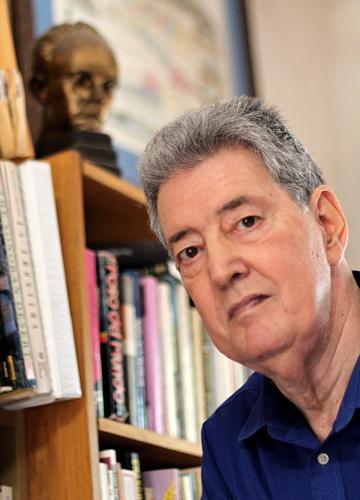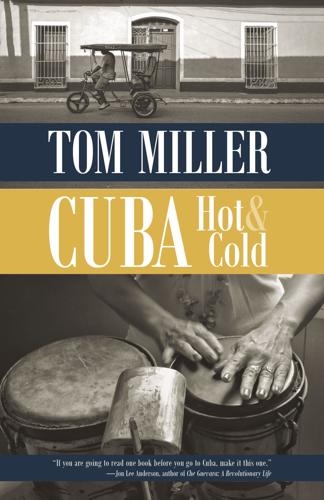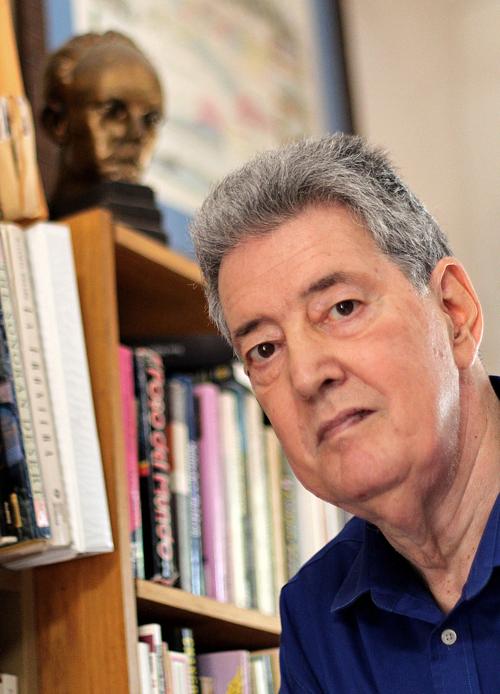Festschrift is a German word for essays written by colleagues or students of a accomplished, respected academic and scholar.
Tucson author Tom Miller would unlikely consider himself an academician, although he has lectured to college classes. He would probably scoff at being called a scholar but he certainly has deep knowledge about a number of subjects. Rather, he would be content to be known as an author and journalist.
For that, a 63-page Festschrift has been written to honor Miller, author of more than 10 books and countless newspaper and magazine stories about the border, the Southwest, Latin America and Cuba. The publication features 15 individuals, most of them from Tucson, and was edited by David Carter, a former business editor for the Arizona Daily Star.
Miller, who dropped out of college after a couple of years and has written about the border and Latin America for more than 40 years, would surely rank with anyone with several degrees working in academia.
“I didn’t learn it in English or journalism class,” said Miller, whom I recently visited in his midtown home where he lives with his Cuban-born wife, Regla Albarrán.
What he learned, he said, he learned by doing.
Some of his books include “Jack Ruby’s Kitchen Sink: Offbeat Travels through America’s Southwest,” “On The Border,” “The Panama Hat Trail: A Journey From South America,” “Trading with the Enemy: A Yankee Travels Through Castro’s Cuba,” the compilation “Writing on the Edge: A Borderlands Reader,” and his latest, “Cuba, Hot and Cold.”
An excerpt from his new book was printed in the Arizona Daily Star on Nov. 12.
His articles and essays have appeared in the Washington Post, New York Times, Smithsonian and Rolling Stone. Miller founded the U.S.-Cuba Writers Conference, a bilingual and bi-national conference held in Havana, and is co-founder of Writers of the Americas. He also has long been affiliated with the University of Arizona’s Latin American Area Center as a guest lecturer.
And the UA’s Special Collection Library has Miller’s personal collection of underground press publications and material he gathered in his years of research and writing.
Carter, who accompanied Miller to Cuba in January 2016, said that Miller, who generally keeps a low profile, deserved wider recognition. Carter said he hatched the Festschrift after seeing one devoted to Eliana Rivero, UA professor emerita in the Department of Spanish and Portuguese, and adjunct professor of Women’s Studies and Latin American Studies. Rivero contributed an essay to Miller’s homage.
“Tom has helped create the area of borderland studies,” Carter said.
Miller, who grew up in Washington, D.C., and spent a couple of years in an Ohio college, arrived in Tucson in the late 1960s. He had already dabbled in journalism when he began to explore the complexities and wonders of border life and strife. It was all new and, using basic journalistic senses, Miller immersed himself in border culture and currents.
“I didn’t have to go too far to find a good story,” he said.
One of his first major stories, as a stringer for the New York Times, was on the trial of Thomas and Patrick Hanigan, two brothers and ranchers who, with their father George, were accused in 1976 of kidnapping and torturing three Mexicans who had traversed their land while crossing the border in the Douglas area. Only Patrick Hanigan was found guilty, after three trials.
Miller’s mid-’80s “Panama Hat Trail,” in which he traces a straw hat from its creation in Ecuador to its sale at a high-end hat store in San Diego, is considered one of the best travel books. Miller said the key to that book, and any other travel book, is to explore deep and wide into the culture and people. “It wasn’t about hats,” he added.
But it’s been Cuba that has captivated most of his attention and work. Miller began visiting and writing about the small island more than 30 years ago when few Americans were traveling there, much less writing about the country and its people. In his writings, Miller went off the beaten path, to explore parts of Havana and the provinces that were unknown to American readers.
Miller explored the contradictions and challenges through the stories of everyday Cubanos. And through his literary and cultural tours, Miller helped Americans navigate Cuban daily life.
“Cuba always has and will be of great interest to the United States,” he said.
At 70, Miller feels he has another book in him. It will be a challenge because of health issues. But knowing Miller, as I have for many years, I have to believe him that he’s not finished writing and sharing his keen observations.
“There are still stories to tell,” he said.







